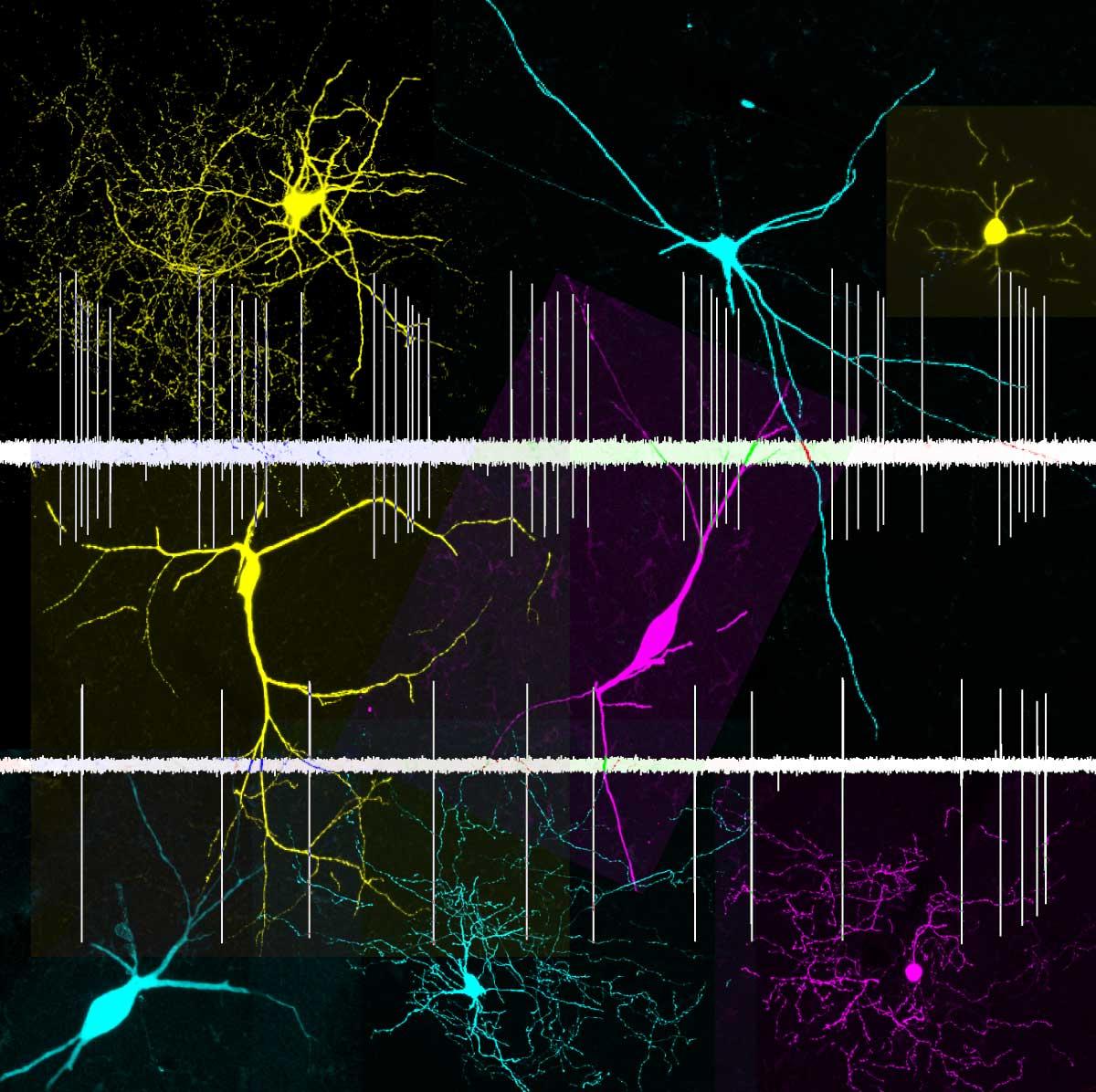Electrophysiological recordings of juxtacellularly labelled striatal interneurons in vivo
Each MATLAB .mat file contains an electrophysiological recording of a single striatal interneuron and coincident electrocorticogram (ECoG). Neurons are only included in this data set if they were juxtacellularly labelled following recording, recovered post-mortem and confirmed to express either parvalbumin (PV), choline acetyl transferase (ChAT), nitric oxide synthase (NOS) or calretinin (CR).
All recordings were made from Sprague Dawley rats anaesthetised with urethane and supplemental doses of ketamine and xylazine. Detailed methods can be found in the references below.
Recordings were made in to brain states: slow wave activity (SWA) and cortical activation. Recordings are divided in to folders based on both their neurochemical identity and the state in which they were recorded.
Each folder contains neurons of a single neurochemical identity (chat, pv, nos or cr) recorded in one brain state (swa or Act).
Some neurons were recorded in both states. Names of neurons are consistent throughout so that neurons recorded in both states can be compared.
The electrophysiological data and their recording parameters are stored as structure arrays (“ephys”) with the following fields:
ephys.wideband
Data values of the wideband recording from the glass electrode (including both local field potential and action potential components).
ephys.highpass
Data values for the online highpass filtered 300 –5000 Hz wideband signal used to sort action potentials.
ephys.time_bin
Binary representation of the spike times of the sorted action potentials
ephys.ecog
Data values for coincident ECoG recording
ephys.time_axis
Time axis for all electrophysiological recordings.
ephys.sr
Sampling rate of all electrophysiological recordings (all 16000)
ephys.amp_unit
Amplitude unit for all electrophysiological recordings (all mV)
We welcome researchers wishing to reuse our data to contact the creators of datasets. If you are unfamiliar with analysing the type of data we are sharing, have questions about the acquisition methodology, need additional help understanding a file format, or are interested in collaborating with us, please get in touch via email. Our current members have email addresses on our main site. The corresponding author of an associated publication, or the first or last creator of the dataset are likely to be able to assist, but in case of uncertainty on who to contact, email Ben Micklem, Research Support Manager at the MRC BNDU.

Creative Commons Attribution-ShareAlike 4.0 International (CC BY-SA 4.0) This is a human-readable summary of (and not a substitute for) the licence. You are free to: Share — copy and redistribute the material in any medium or format Adapt — remix, transform, and build upon the material for any purpose, even commercially. This licence is acceptable for Free Cultural Works. The licensor cannot revoke these freedoms as long as you follow the license terms. Under the following terms: Attribution — You must give appropriate credit, provide a link to the license, and indicate if changes were made. You may do so in any reasonable manner, but not in any way that suggests the licensor endorses you or your use. ShareAlike — If you remix, transform, or build upon the material, you must distribute your contributions under the same licence as the original. No additional restrictions — You may not apply legal terms or technological measures that legally restrict others from doing anything the licence permits.

